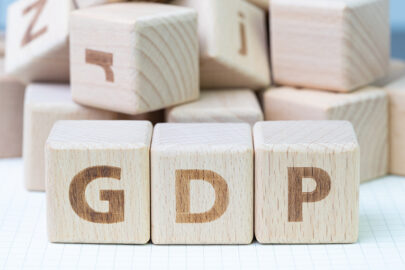The Office for National Statistics (ONS) has estimated that UK gross domestic product (GDP) increased by 0.8% in the first quarter of 2022. It was previously forecast to grow by 1.0% over that period.
In addition, GDP fell by 0.1% in March, after no growth in February.
Laith Khalaf, head of investment analysis at AJ Bell, said: “The UK economy has now recovered to its pre-pandemic level, but momentum seems to be ebbing away, and recessionary forces are gathering. GDP came in at 0.8% for the first quarter of the year, a little below forecasts. What is more concerning is that almost all of the growth was registered in January, and March actually saw a 0.1% fall in GDP.
“Household expenditure was still positive in the first quarter, as consumers took advantage of new found freedoms to go out and spend money in shops, restaurants and hotels. But that was really the calm before the storm, as higher energy prices and taxes kicked in from April. The retail and wholesale trade saw itself going backwards in the first quarter, with new car sales still struggling as a result of global supply issues.
“Government policy is also having an effect on the headline GDP numbers, as the fading of the winter booster programme and the wind down of the test and trace service reduced overall economic activity. Presumably this is something we can expect to tick up again as the next booster programme works its way through the eligible population in the second quarter, and speaks to the distortion in economic data points that is still occurring as a result of the pandemic.
“On top of higher energy prices and taxes, the UK economy now also has to deal with rising interest rates, which will serve to further dampen activity. Recession risk is therefore elevated, and while growth is still expected this year, 2023 looks like it will be more challenging economically. The markets are already looking forward to next year with some trepidation, which explains why we have seen significant falls in the pound and the FTSE 250 since the start of the year.
“The central bank is raising rates to try to take some of the steam out of the labour market, to prevent an inflationary wage spiral, but clearly there is a risk the rate setting committee pushes too hard. Controlling the economy through tightening monetary policy is a bit like trying to move a brick with a piece of elastic. It’s hard to apply precisely the right amount of force and avoid the brick hitting you square in the face.”
Kevin Brown, savings specialist at Scottish Friendly, added: “These figures are a bitter pill to swallow for both households and businesses up and down the land. Not content with an inflation crisis, the country is now contending with failing growth. A healthy economy is the only factor which could prevent misery being piled on misery with inflation and interest rate increases.
“With the inflation cat already out of the bag, interest rate rises are now only going to make the economic tight rope more difficult to balance upon. If this economic environment continues, then we can expect the very real prospect of unemployment beginning to increase as businesses batten down the hatches and prepare for the worst.
“The issue now is who will offer a more confident message to families facing soaring cost of living rises and uncertainty over their job security. It is a tricky mix that will get worse before it gets better.”
